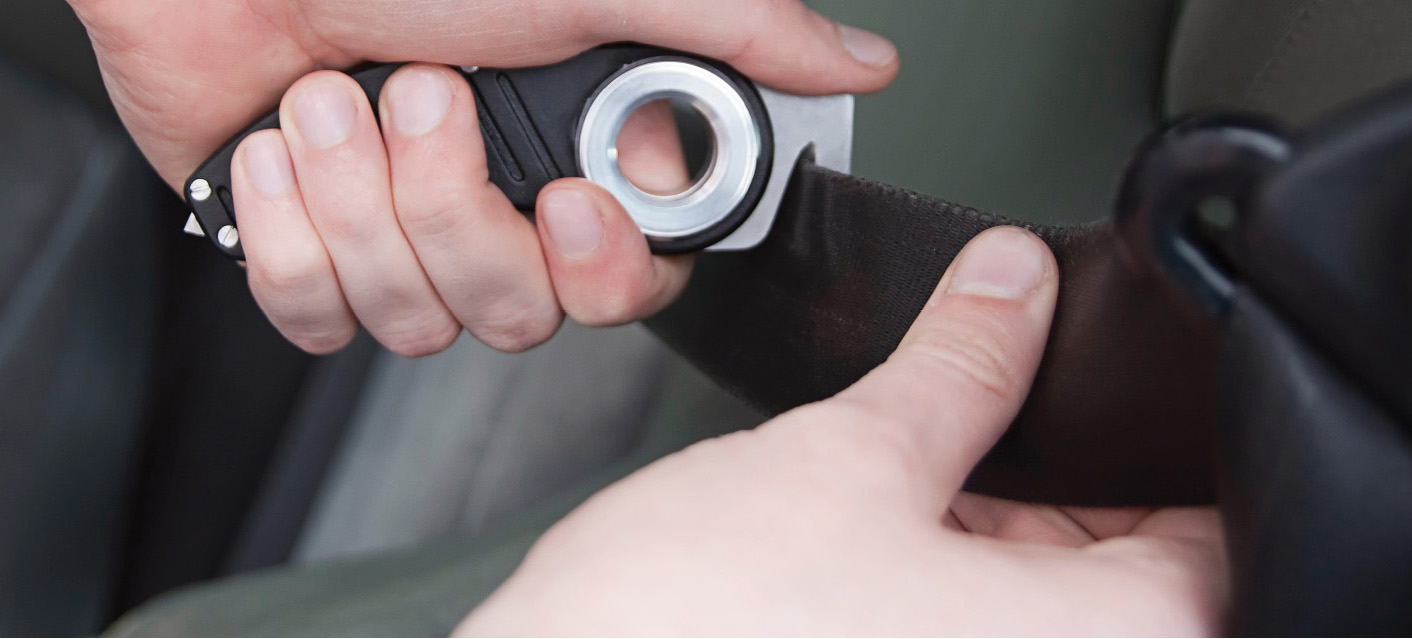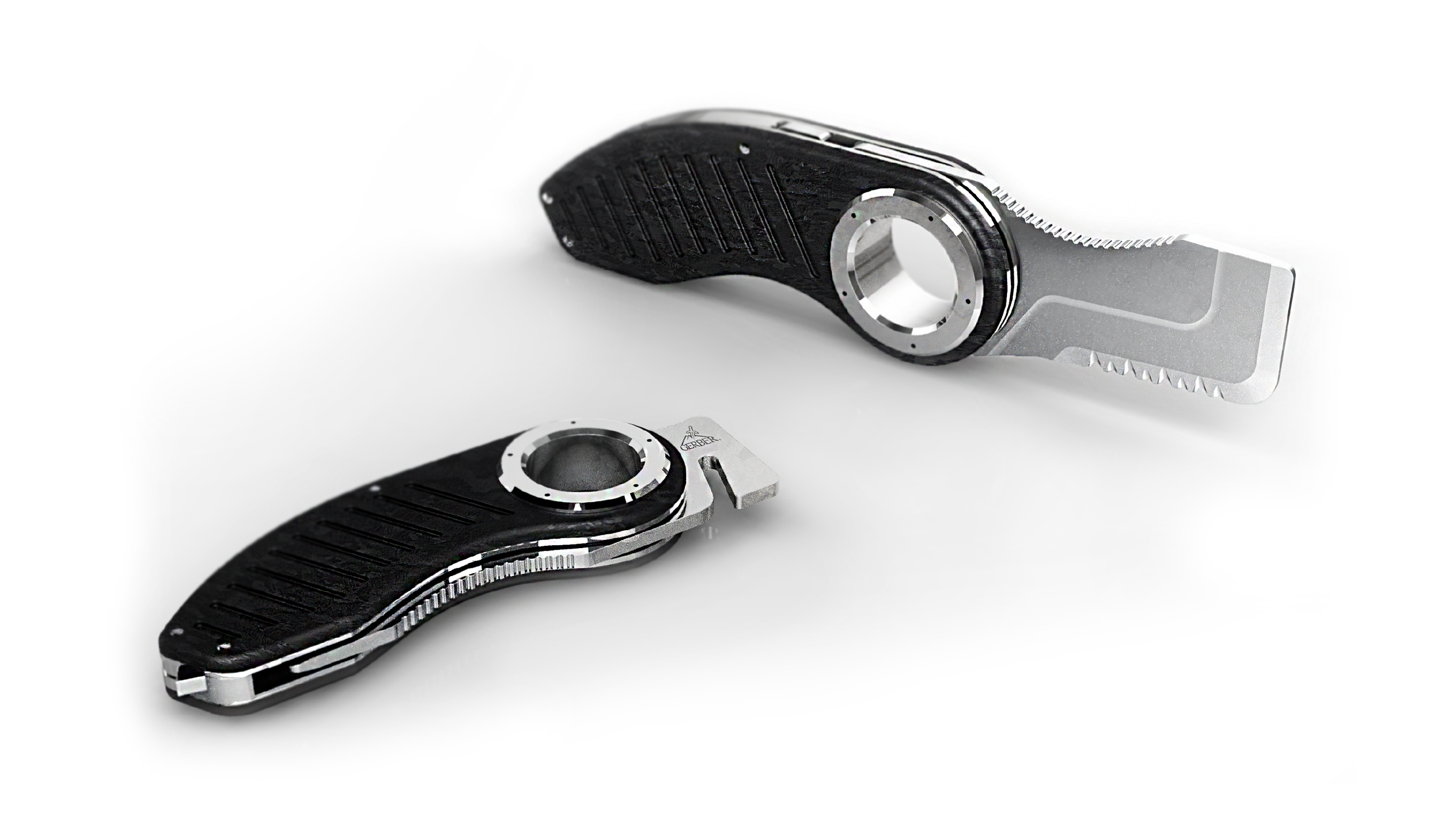
2010 | Student Work | Western Washington University
This student project was focused on creating a multifunction tool for a specific user group. It was sponsored by the Gerber knife company and completed in collaboration with their Industrial Design department.
During the initial meeting, one of the lead designers from Gerber made a presentation to familiarize us with their products and philosophies. I was intrigued by one of the tools that Gerber developed and produced for military use. They had designed a strap cutter that is now standard issue in US military Humvees, and allowed soldiers to quickly extract themselves from a disabled vehicle. This was a very practical tool that made a significant impact on the world, and its use saves lives.
Application
I was eager to apply this successful idea to a new market and began by thinking about other user groups that have to respond quickly to emergency situations. Police officers are often first on the scene of an accident and need to quickly and safely extract people from dangerous situations.
Persona
I created a persona to help guide and refine early research and ideation. This is a fictional composite based on research obtained primarily from law enforcement forums, as well as several phone interviews I conducted with police officers, both current and retired.
Research continued by analyzing current Gerber products, as well as their competitors. There are two major categories of rescue tools, compact simple tools with a focus on a strap cutter, and larger multi-function tools based on a folding blade. The first tool is the Gerber strap cutter that served as the inspiration for this project. The next three are competitors products, aimed at the civilian market. Many of these tools have a hooked strap cutter, and are made from a single piece of steel with an optional secondary material for the grip/handle area. All these tools feature a means of gaining additional grip on the tool, either with a cutout for fingers to loop through, or large detent for a finger to wrap tightly around.
These are the larger sized more complex tools. The first tool pictured is another current Gerber product. These tools are based on a large folding blade, which is often serrated for faster cutting. Many have a blunted tip, to cut safely in close proximity to a person. They have strap cutters, and also a hardened point for breaking safety glass.
Process
Initial sketching focused on the small tool group, emphasizing the ability to cut straps, and a point for breaking glass. An area for improvement was the accessibility of the strap cutter. This is likely the first tool required in a rescue situation, and many of the current tools on the market required an action by the user in order to access the cutter. The larger sized tools often did not retain many of the features to aid grip that were available on the smaller tools.
These were the three concepts presented at the Gerber offices for a mid-project review. Based on feedback from this meeting, the most promising concept was the larger sized tool. The smaller tools were not on target with the Gerber brand language, and there was less interest from their core user groups in the compact category.
The central open hub featured in the larger tool was based on a current Gerber knife, the remix. They retain patents on this configuration, but had not developed any other iterations of the product. This was an ideal configuration for gaining extra pulling power on a strap cutter. It presented an opportunity to leverage their existing intellectual property, to add a valuable feature in a new configuration.

The form language of this tool was especially important, as it has to match current police equipment. Police officers have some standard departmentally issued equipment, however many elect to carry additional tools that they purchase themselves. I chose to analyze an iconic tool for law enforcement, the Glock pistol. It is used by law enforcement across the country, and embodies many common elements of police equipment form language. Several of these essential elements are the strong angular profile, repeated linear details, textured grip insets, and geometric knurling indicating finger position.
Refinement
After the feedback from Gerber, I continued to refine the shapes and features of the tool. A focus was making the strap cutter and glass-breaking point readily accessible, as soon as the tool was in the user's hand.
A series of full-scale models were made from styrene plastic. This sheet material approximated the construction method of the actual tool, stainless steel flat stock. Each model was tested for ergonomic fit, and several iterations were made.




A full scale model was made from stainless steel, aluminum, and FDM grip plates. These photos illustrate the essential functions of the final tool design. A strap cutter is always available, as well as a hardened point for breaking safety glass. The blade has a serration to cut quickly and a blunted end for safe use near a person. The blade is thicker than standard, to allow the tool to be used for prying without damage.









